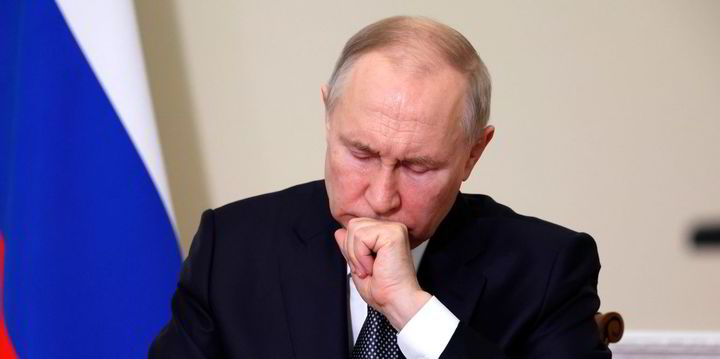Russia’s plans to boost government revenues with recent oil tax increases have failed, the country’s Finance Ministry has admitted.
The higher taxes were introduced in April in an effort to fill the growing gap in the nation’s budget, which sank to a deficit of 2.4 trillion roubles ($29 billion) in the first quarter of the year and 3.4 trillion rubles by the end of April.
Total revenues have failed to keep pace with government spending that has increased greatly since the invasion of Ukraine in February last year.
Oil and gas producers even paid less in direct taxes in April after the new increases were introduced than the previous month, the ministry said — 647 billion rubles ($8.6 billion) in April against 688 billion rubles in March.
The drop reverses a slight improvement early this year, when oil and gas producers paid 521 billion rubles in February following a record low of 426 billion rubles in January, according to the ministry.
Two oil and gas sector taxes — the oil production tax and oil export tax — were targeted by the government in its drive for more revenues.
Article continues below the advert
Previous calculations were based on independent price quotations for Russia’s Urals blend — the country’s main crude blend for exports.
However, the new tax formula uses a pre-set discount on Urals, which is deducted from a monthly average of Brent blend spot quotations to determine the final price for both taxes.
As part of its efforts to boost income for oil and gas producers, and help them pay more revenues, the government also joined other members of Opec+ alliance in April in a push to reverse declining global oil prices.
The Opec+ group announced a surprise production cut of more than 1.1 million barrels per day, which reversed the slow decline in the Brent prices that had been closing on $70 per barrel at the end of March, pushing them to between $80 and $90 per barrel.
Russian Deputy Prime Minister Alexander Novak also confirmed that the government would push for an additional cut of 500,000 bpd from the country’s sector.
A higher Brent price was sought by the government to help boost the export earnings of Russian oil companies, which are targeting sales of Urals blend to customers in China, India and elsewhere at a significant discount after the European Union banned Russian crude imports in response to the war in Ukraine.
Novak said earlier in April that Russian authorities had seen “an improvement in Urals discounts” after new export routes to Asia had stabilised.
However, the Finance Ministry said it believed the recent lower revenues from the energy sector were a result of “declines in Urals price quotations and the volume of [pipeline] gas exports” from Russia.
Russian state gas giant Gazprom’s gas exports to Europe so far this year have been about 25% of the level before Russia’s invasion in Ukraine.
Though the Russia government has stopped disclosing monthly oil production and exports statistics, Energy Ministry sources quoted by Bloomberg alleged that the country’s output may have fallen by about 440,000 bpd in April, though seaborne oil exports increased to another high in the past month.
Moscow-based energy consultancy RusEnergy’s managing partner Mikhail Krutikhin said that Russian producers have been prioritising spending on brownfield projects to maintain production at existing assets while holding long-term investments in greenfield developments.
He also suggested that Russian producers have increased oil export sales to affiliated foreign-registered players and trading outfits in an effort to accumulate more earnings outside the country, and thus reduce their tax obligations to the state.

